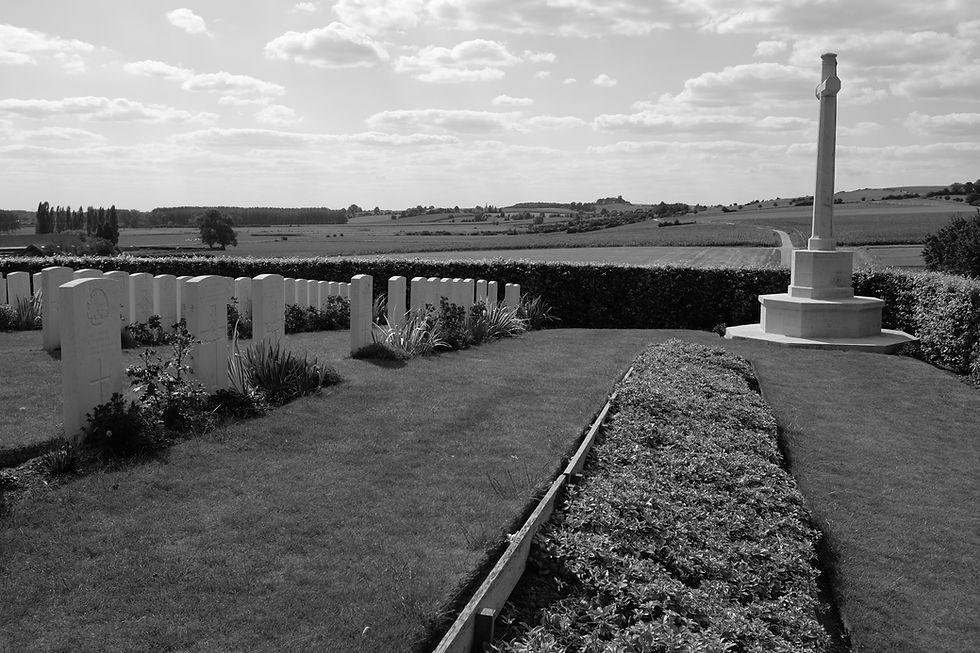WESTHOF FARM CEMETERY
- Admin
- Apr 26, 2022
- 2 min read

The cemetery was begun in May 1917 and remained in use until after the German advance during the Battle of the Lys in April 1918. The farm is the red roofed building a little way down the slope and the lane was known as Waterloo Road. The view from the cemetery is excellent. The ground between the main round and the farm was once full of camps as this was considered to be a safe area.
The farm was used as a Divisional headquarters by the New Zealand Division in May and June 1917. It was also a dressing station.
Canon Frederick Scott, Senior Chaplain to the Canadian 1st Division, mentions a stay at the farm in his memoirs ‘Great War as I saw it’, P.98
‘One day, General Seely invited me to go and stay with him at his Headquarters in Westhof Farm where I had a most delightful time. Not only was the General a most entertaining host, but his staff were very charming. At dinner, we avoided war topics and shop, and talked about things political and literary. The mess was in the farm building and our sleeping quarters were on an island in the moat. My stay here brought me into contact with the Canadian Cavalry Brigade, and a fine lot of men they were.’
Shot at Dawn
There is one man buried here who was shot at dawn.

A/201225 Rifleman Thomas Donovan, Age 20, Grave II.D.14. 16th (Church Lads Brigade) Kings Royal Rifle Corps, 100th Brigade, 33rd Division. He already had a poor service record. After the Battle of the Somme he absconded and was convicted of desertion receiving a six month prison sentence. He went missing again 18 months later while on the Somme and was arrested in Amiens. After conviction for this offence he escaped from the guardroom and was at large for one month before being caught in Amiens once again. He was returned to his battalion, which was now in the Salient, and absconded for the fourth time on 22 August 1917, attacking a guard by throwing him to the ground before gagging him and tying him up. He was arrested on 1 September disguised as a Belgian labourer. A six week delay took place before he was brought to trial on 17 October. He was executed on 31 October 1917.





Comments